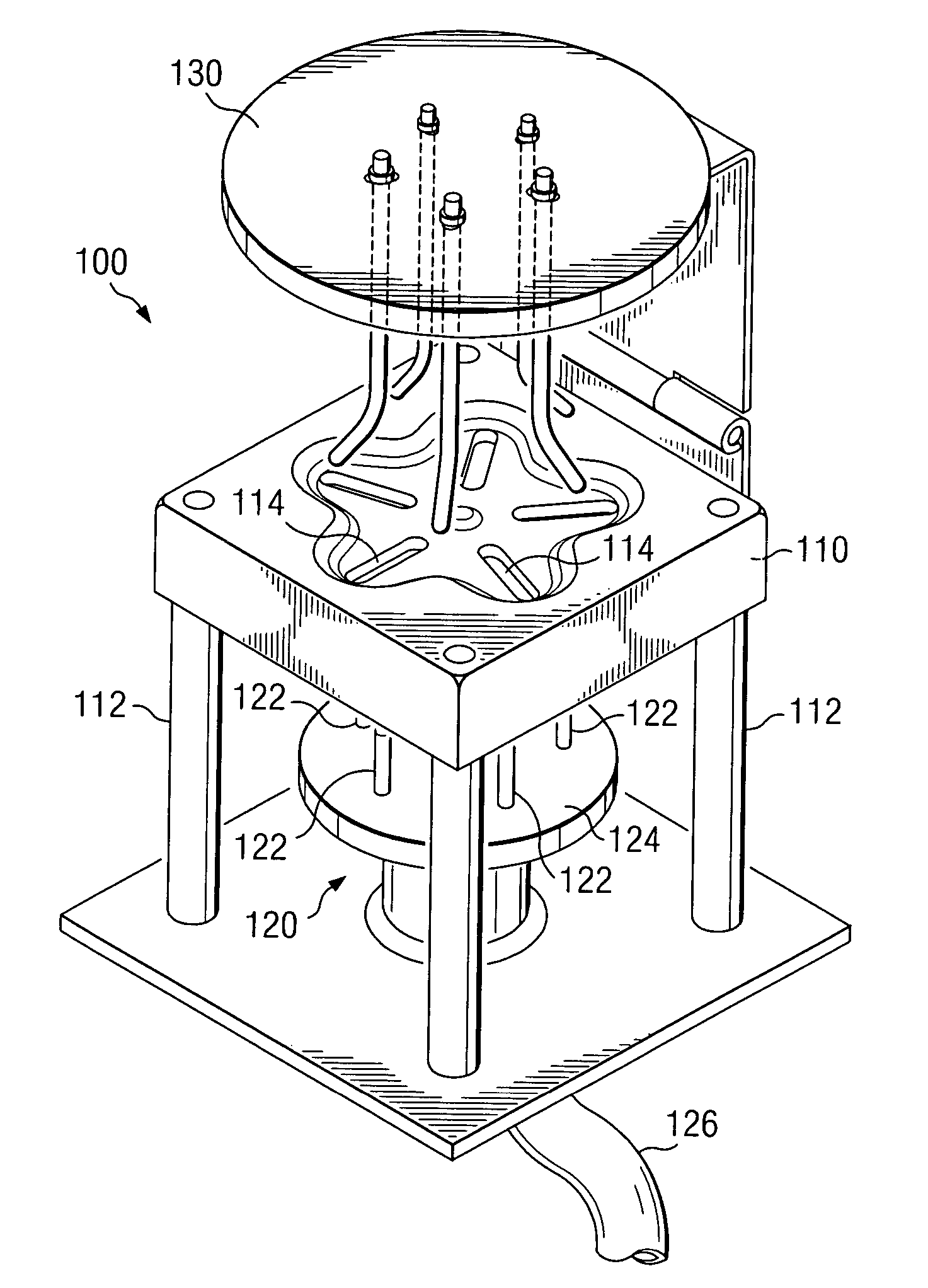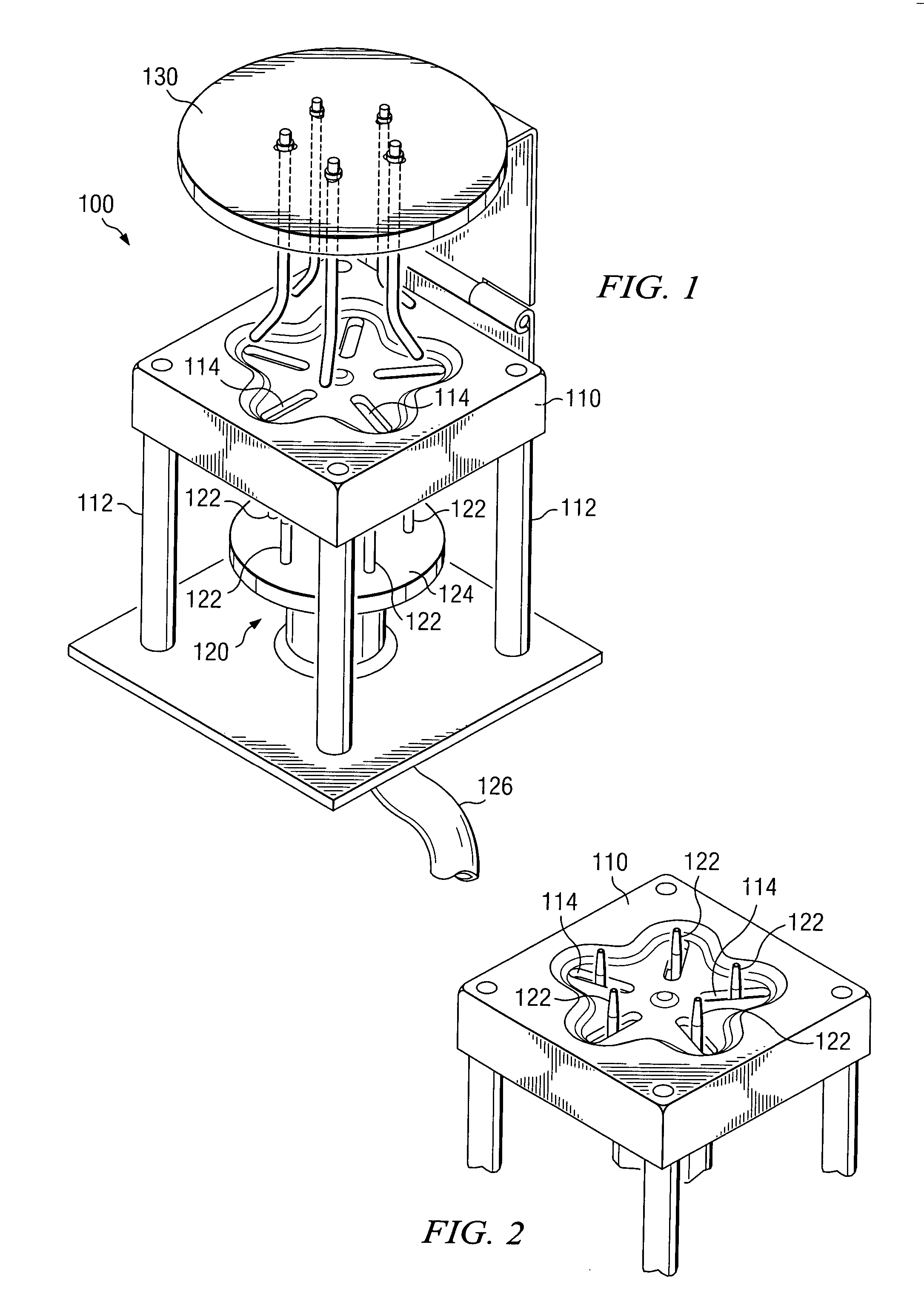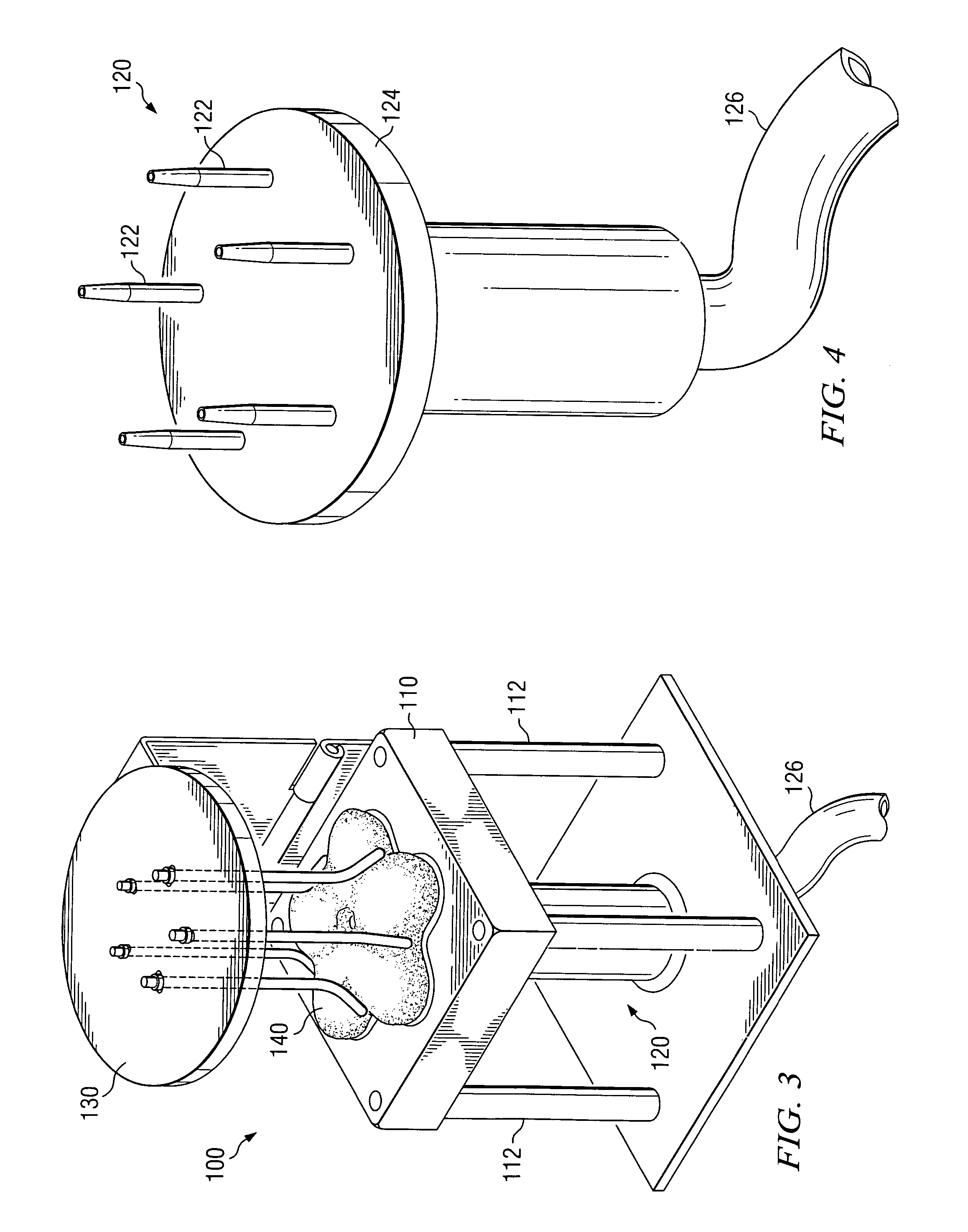Automatic bottom-filling injection system
a technology of injection system and bottom filling, which is applied in the field of automatic bottom filling injection system, can solve the problems of increasing operating costs, difficulty in achieving consistent filling with such devices, and the need of a human operator, and achieve the effect of efficient filling large or complex food items
- Summary
- Abstract
- Description
- Claims
- Application Information
AI Technical Summary
Benefits of technology
Problems solved by technology
Method used
Image
Examples
Embodiment Construction
Multi-Port, Bottom-Filling Injection Device
[0023] A multi-port, bottom-filling injection device in accordance with the present invention has a filling head that volumetrically splits a flow of filling among two or more spouts or needles. Unlike prior art food filling devices, an injection device in accordance with the present invention can simultaneously provide a food filling to each chamber of a multi-chambered food item without leaving unsightly fill holes in the top or side surfaces. Whereas prior art devices had difficulty filling food items having large or complexly-shaped chambers, an injection device in accordance with the present invention can also be used to efficiently fill such food items by simultaneously introducing two or more spouts or needles into each large or complex chamber and transferring filling through those spouts or needles. A multi-port, bottom-filling injection device in accordance with the present invention can be manually operated as a single unit or ...
PUM
 Login to View More
Login to View More Abstract
Description
Claims
Application Information
 Login to View More
Login to View More - R&D
- Intellectual Property
- Life Sciences
- Materials
- Tech Scout
- Unparalleled Data Quality
- Higher Quality Content
- 60% Fewer Hallucinations
Browse by: Latest US Patents, China's latest patents, Technical Efficacy Thesaurus, Application Domain, Technology Topic, Popular Technical Reports.
© 2025 PatSnap. All rights reserved.Legal|Privacy policy|Modern Slavery Act Transparency Statement|Sitemap|About US| Contact US: help@patsnap.com



